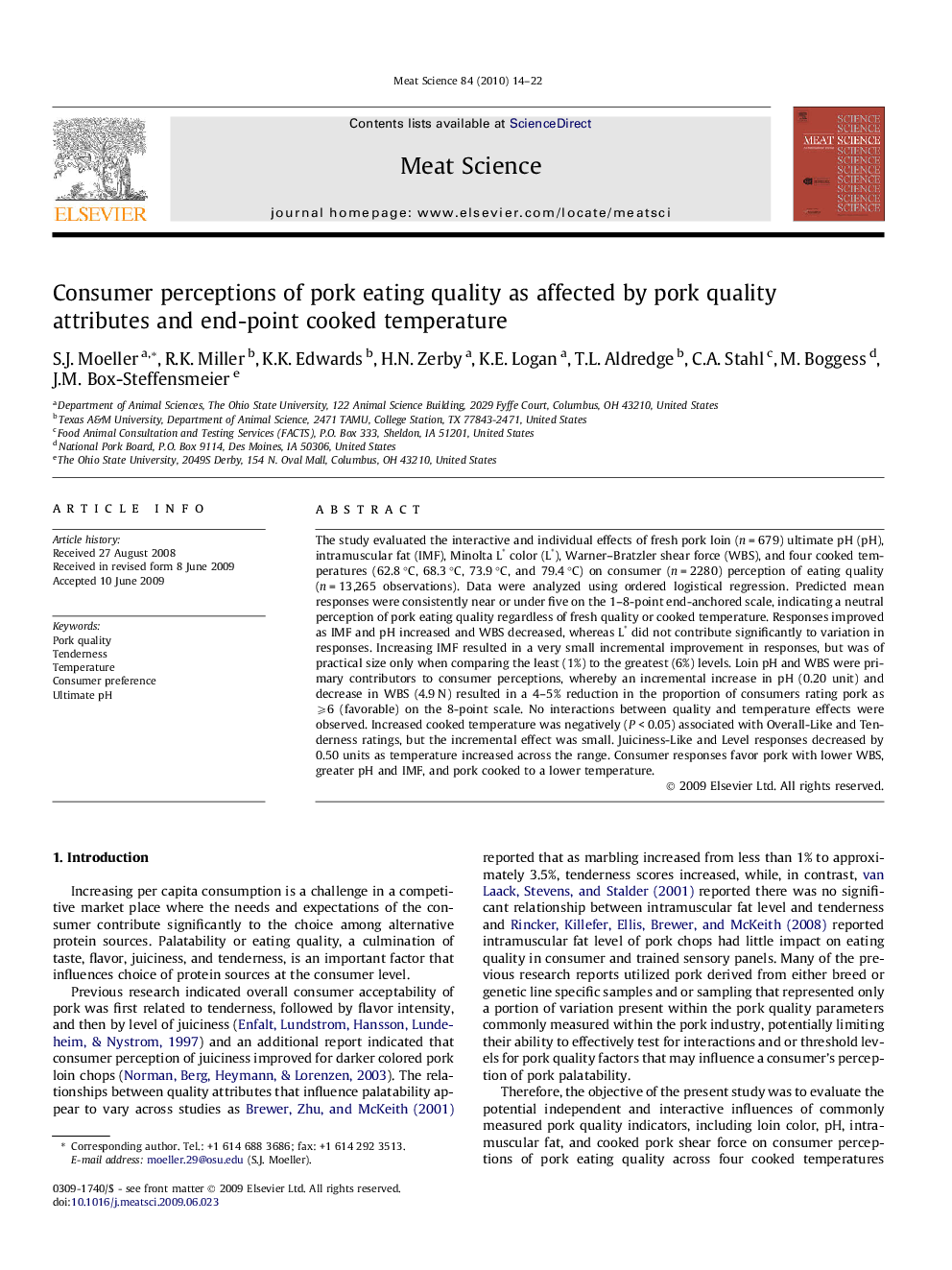| Article ID | Journal | Published Year | Pages | File Type |
|---|---|---|---|---|
| 2451116 | Meat Science | 2010 | 9 Pages |
The study evaluated the interactive and individual effects of fresh pork loin (n = 679) ultimate pH (pH), intramuscular fat (IMF), Minolta L* color (L*), Warner–Bratzler shear force (WBS), and four cooked temperatures (62.8 °C, 68.3 °C, 73.9 °C, and 79.4 °C) on consumer (n = 2280) perception of eating quality (n = 13,265 observations). Data were analyzed using ordered logistical regression. Predicted mean responses were consistently near or under five on the 1–8-point end-anchored scale, indicating a neutral perception of pork eating quality regardless of fresh quality or cooked temperature. Responses improved as IMF and pH increased and WBS decreased, whereas L* did not contribute significantly to variation in responses. Increasing IMF resulted in a very small incremental improvement in responses, but was of practical size only when comparing the least (1%) to the greatest (6%) levels. Loin pH and WBS were primary contributors to consumer perceptions, whereby an incremental increase in pH (0.20 unit) and decrease in WBS (4.9 N) resulted in a 4–5% reduction in the proportion of consumers rating pork as ⩾6 (favorable) on the 8-point scale. No interactions between quality and temperature effects were observed. Increased cooked temperature was negatively (P < 0.05) associated with Overall-Like and Tenderness ratings, but the incremental effect was small. Juiciness-Like and Level responses decreased by 0.50 units as temperature increased across the range. Consumer responses favor pork with lower WBS, greater pH and IMF, and pork cooked to a lower temperature.
